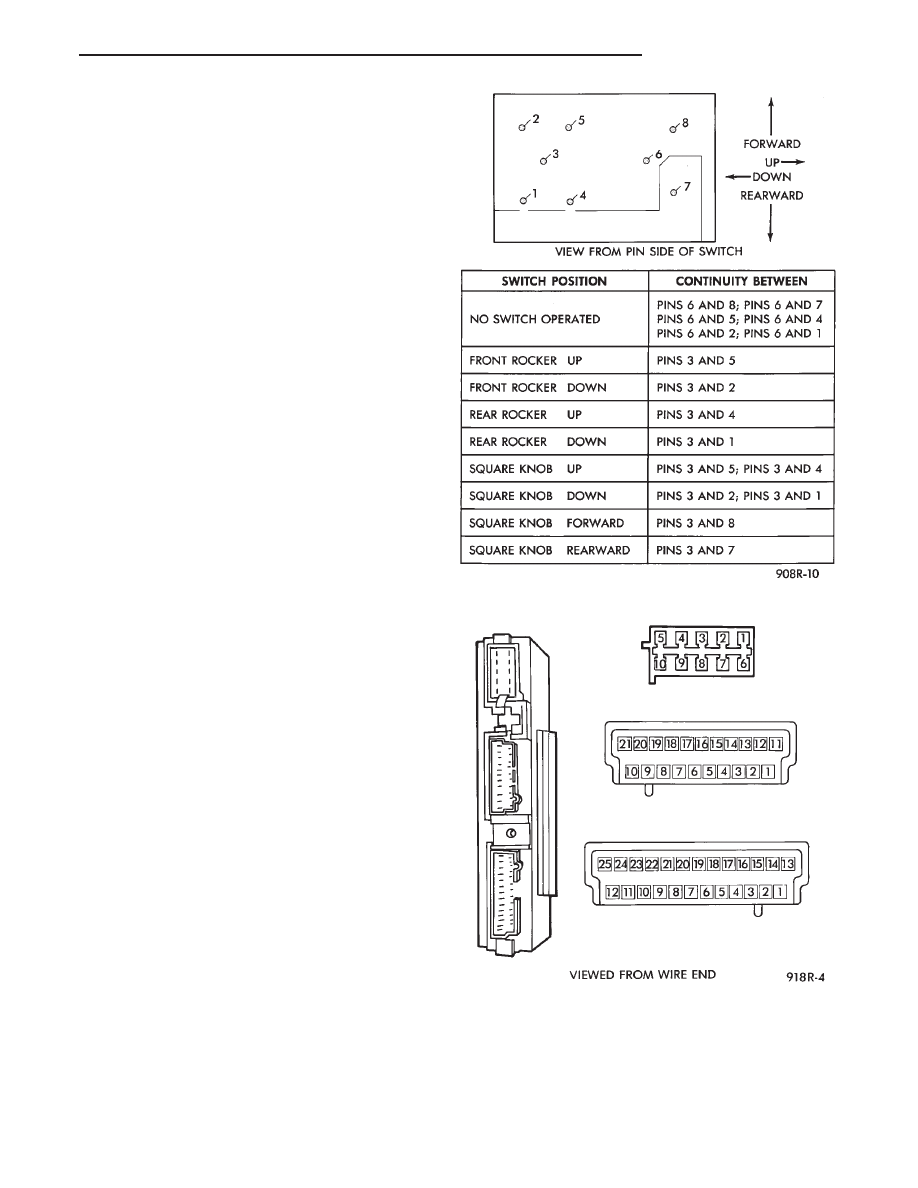Chrysler Le Baron, Dodge Dynasty, Plymouth Acclaim. Manual - part 353

above. When the control module has finished, it will
return to the normal operating mode after ten sec-
onds if no further switches are activated.
The control module will also return to normal op-
erating mode if any manual seat or recliner move-
ment switch is actuated during the ten second
timeout.
If the system has found a problem, refer to the ap-
propriate diagnosis condition.
POWER MEMORY SEAT, RECLINER AND
MIRRORS DIAGNOSIS
Before any diagnosis is done on the system, move
the seat switches and listen for relays clicking in the
control module under the seat. If relays can be heard,
the main battery and ground circuits to the control
module as well as the battery circuit to the switches
in the driver’s door are good.
When checking for voltage or continuity, always
use a volt/ohm meter to get accurate readings. The
seat and recliner switches must be activated to check
for voltage at the seat and recliner motors or at the
input to the control module from the switches.
The control module creates a special voltage supply
for the position sensing functions. It also shuts down
after five seconds, in order to check this or any other
voltage being fed back to the control module. A
switch may have to be activated more than once to
verify a voltage reading. The voltage from the con-
trol module that feeds the seat and recliner position
sensing potentiometer, will be between 4.5 to 5 volts.
For simplicity in the diagnosis section, the feed volt-
age will be called 5 volts. On the position sensing
wires, these voltages will always be less than 5 volts
but more than 0 volts. Typically the high level is at
a maximum of about 4.25 volts and the low level can
be as little as 0.1 volts.
If any seat or recliner potentiometer or mirror
rheostat position sense wires are crossed, the control
module will not move that part of the system. The
seat or mirror will be in a fault diagnostic mode.
CONDITION: SYSTEM WILL NOT OPERATE.
PROCEDURE
(1) Check for forward/rearward operation of re-
cliner. If not operable, check for an open or loose cir-
cuit breaker mounted in board on the relay bank in
cavity 15.
(2) Check for continuity between 2-way connector
under driver’s seat and pin 1 at control module 10-
way connector (Fig. 16 and 17).
(3) Check for continuity between 2-way connector
under driver’s seat and pin 6 at control module 10-
way connector.
(4) Check for any movement of the seat by operat-
ing the seat switch.If movement the circuit is good
into the control module.
(5) No movement check for an open or loose fuse in
cavity 15 of the fuse block.
(6) Check for battery voltage to pin 3 of driver’s
power seat switch.
Fig. 16 Memory Seat Switch Continuity
Fig. 17 Memory Seat Module Connectors
Ä
POWER SEATS
8R - 9